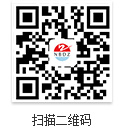In the first half of the year, the chemical fiber industry was generally stable. The international oil price fluctuated upwards, which put tremendous pressure on the cost of the chemical fiber industry, pushing up the price of the combined fiber market. Although the growth rate of total profit is not as good as that of the same period of last year, the overall quality of the industry is good. The sub-sectors are operating differently, showing the situation of two-day ice and fire. The polyester and nylon industries perform well, and the viscose, acrylic and spandex industries are more difficult to operate. Investment continued to rebound and production capacity was in a period of concentrated release.
Basic situation of industry operation
(1) Supply and demand situation
According to the statistics of the National Bureau of Statistics, the chemical fiber output from January to June was 24.611 million tons, an increase of 8.4% year-on-year. The average operating rate of the polyester and nylon industry in the first half of the year was higher than 80%, and the operating status was better than other industries. The viscose staple fiber industry is affected by the supply and demand relationship. The overall operating rate of the industry fluctuates between 80% and 85%, which is less than in previous years.
From the demand side, downstream demand has increased year on year. In addition to cord fabrics, the output of downstream main products increased to different degrees year-on-year; the operating rate of downstream factories also increased significantly compared with the same period of last year; in addition, the total transaction volume of China textile city increased by about 33% year-on-year, especially in April and May. It also shows strong demand for chemical fiber. Due to good production and sales, the polyester and nylon industry stocks were lower than the same period of last year, keeping the inventory in a low state, which is also a prerequisite for the price to be transmitted downstream.
(2) Market
Due to the increase in the price of bulk commodities, the price of synthetic fiber products was generally higher than that of the same period of last year, and the polyester filaments increased significantly. Because polyester filament has the largest volume, it feels that the chemical fiber market is “up”, but in fact, the market conditions of various sub-sectors are obviously different, and it is a two-day situation. It can be summarized as “cost-driven increase, capacity pressure decline”. .
(3) Quality effect
In the first half of the year, the growth rate of the main business income and total profit of the chemical fiber industry increased gradually. From May onwards, the total profit was reversed from negative growth to positive growth. Statistics from the National Bureau of Statistics show that from January to June, the main business income of the chemical fiber industry was 387.3 billion yuan, a year-on-year increase of 16.27%; the total profit was 17.8 billion yuan, an increase of 19.27%. The industry's loss was 21.92%, an increase of 4.66 percentage points year-on-year, and the loss of loss-making enterprises also increased by 22.21%. The total profit of the industry and the loss of the loss-making enterprises are increasing, indicating that the company's profitability is more differentiated.
From the statistical data, the profit of the chemical fiber industry mainly comes from the polyester, cellulose fiber and nylon industries, but the viscose fiber industry in the cellulose fiber industry is almost at a loss.
The quality of the chemical fiber industry is generally good. From January to June, the profit margin of the main business was 4.6%, an increase of 0.12 percentage points year-on-year; the asset turnover rate accelerated, and the proportion of the three fees decreased. The increase in industry profits, mainly from the market level, is mainly due to the increase in product prices and the follow-up of downstream demand, but its essence is that the supply-side structural reforms have achieved results, the relationship between supply and demand has improved, and new product development has accelerated. In terms of brand, quality and variety.
Main factors affecting the operation of the chemical fiber industry
(1) International oil prices
In the first half of the year, the "unexpected" situation of the international situation occurred frequently. Political risks and supply fluctuations caused oil prices to fluctuate and continue to hit new highs. The rise in oil prices is a double-edged sword. On the one hand, it provides strong support for chemical fiber prices, and it is conducive to corporate inventory, but on the other hand it also pushes up production costs.
(2) Capacity
Driven by good results, the industry's investment enthusiasm has not diminished. In the first half of the year, the growth rate of fixed asset investment in the chemical fiber industry continued its rebound trend last year, an increase of 28.2% year-on-year, and the growth rate was 7.9 percentage points higher than the same period of last year.
The new capacity is released, the backward production capacity is withdrawn, and the industry is in a period of painstaking reshuffle. Among them: the new capacity of polyester industry is mainly led by large enterprises, and the concentration is further improved; polyester staple fiber benefits from the market of recycled fiber; the speed of nylon spinning is less than that of raw materials, and the operation of nylon industry is improved; viscose staple fiber and spandex The new capacity of the industry has a big impact on the market and the industry is running hard.
(3) Renminbi depreciation
Although the depreciation of the renminbi is conducive to exports, the proportion of chemical fiber exports is still low. The dependence on raw materials imports in the chemical fiber industry is high, and the depreciation of the RMB will increase the cost of raw material imports.
(4) Sino-US trade friction
In the first half of the year, Sino-US trade frictions escalated. The first round of 50 billion product list does not contain chemical fiber products; the second round of 200 billion list contains all chemical fiber products and most related products, which is currently in the public comment period. In the short term, the direct impact of Sino-US trade friction on the chemical fiber industry is small, but we must continue to pay attention to the progress of Sino-US trade friction. Thinking from another angle, the challenge is also an opportunity, which will force the industry to do high-quality development and focus on “practicing internal strength”.
Industry operation forecast for the second half of the year
(1) Demand
From July to August, entering the traditional low season of the industry, demand may be weakened, but downstream production capacity has increased, and the traditional peak season in September-October is still worth looking forward to. Exports are intensifying due to trade protectionism, and the escalation of trade friction between China and the United States may lead to a shift in the external demand market or a decline in demand.
(2) Crude oil
From the perspective of supply and demand, OPEC countries will increase production, and US crude oil production will continue to grow. The supply and demand pattern of crude oil in the second half of the year may be slightly surplus. A firm dollar will also cause oil price pressure. However, the international oil price has been separated from the marginal pricing period of shale oil. Currently, it is restricted by the game of big countries, and the uncertainty of oil prices increases.
(III) Operation forecast of chemical fiber industry
The new capacity will be further released, and some long-term production shutdowns will be restarted, which will widen the supply side again. Demand growth is not as strong as supply growth, coupled with instability in exports, the tight balance between supply and demand in the industry (polyester polyester) may be broken. The depreciation of the renminbi will lead to rising costs of imported raw materials. It is expected that the quality of the industry operation in the second half of the year will be less than the first half.
Chemical fiber, economic operation, chemical fiber industry
What are the product characteristics of polypropylene fiber?
What are the product characteristics of polypropylene fiber?
Polypropylene plain yarn specifications: 200D-1200D, can produce a variety of colors. Can also be customized according to customer requirements.
Polypropylene Puqiang Silk Product Features: The ordinary polypropylene fiber has been treated to improve the mechanical, physical and appearance properties of the fiber, which improves the resilience and cohesion, softens the hand, reduces the shrinkage rate, and has the effect of easy washing and quick drying. Good corrosion resistance.
Polypropylene fiber application: polypropylene fiber is mainly used in the field of decorative and industrial textiles.
Advantages of polypropylene fiber: Due to the low specific gravity, light weight, strong coverage and high wear resistance, acid and alkali resistance, insect resistance and easy cleaning, polypropylene fiber is mainly used in: carpet backing, The application of furniture cloth, luggage, canvas, rope, webbing, etc. is extremely extensive.
Learning the characteristics of polypropylene fiber, we can make better use of it, play the greater value of polypropylene.


 Mr. Chen Fei (Mr.)
Mr. Chen Fei (Mr.) 86-574-63550733
86-574-63550733 86-574-63551022
86-574-63551022 dz@dzfibre.cn
dz@dzfibre.cn



